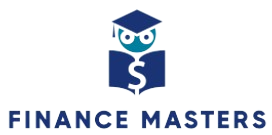Pursuing higher education often comes with significant financial considerations, and educational loans can be instrumental in easing the burden. This article explores the landscape of educational loans in the Philippines, offering insights into available options, eligibility criteria, and repayment plans. With a focus on making education accessible, the article provides prospective students and their families with a comprehensive guide to navigate the process of securing financial assistance for academic pursuits.
Overview of Educational Loans in the Philippines
Access to quality education in the Philippines often faces financial barriers, prompting the establishment of educational loans as a crucial financial tool. Recognizing the economic challenges faced by families, the government and private institutions have introduced various programs to provide financial assistance. These loans are specifically designed to cover the diverse costs associated with pursuing higher education, including tuition fees, textbooks, and other related expenses.
Government initiatives such as the Student Financial Assistance Programs (StuFAPs) and the Higher Education Development Fund (HEDF) play a pivotal role in making education more accessible. These programs often feature low-interest rates and flexible repayment plans, making it easier for students and their families to manage the financial burden associated with education.
The landscape of educational loans has evolved to include not only government-sponsored options but also private institutions offering tailored financial solutions. These loans address the specific needs of students, covering a range of expenses from tuition to accommodation and miscellaneous costs. Moreover, the integration of scholarship-linked loans and employer-sponsored educational loans further diversifies the options available to aspiring students.
Types of Educational Loans Available
| Loan Type | Description | Prospective Borrowers |
| Government Educational Loans | Student Financial Assistance Programs (StuFAPs): socio-economic based assistance. Higher Education Development Fund (HEDF): low-interest loans. | Low to Middle-Income |
| Private Educational Loans | Traditional Educational Loans: offered by private institutions, covering various costs. | Varied Backgrounds |
| Scholarship-Linked Loans | Tied to Scholarship Programs: loans with favorable terms for students maintaining academic excellence. | High Academic Achievers |
| Employer-Sponsored Loans | Corporate Assistance Programs: loans provided by employers as part of employee benefits. | Employees of Sponsoring Companies |
- Government Educational Loans: Government initiatives play a crucial role in providing financial assistance to students. Programs like Student Financial Assistance Programs (StuFAPs) offer support based on socio-economic status, while the Higher Education Development Fund (HEDF) provides low-interest loans to facilitate higher education pursuits.
- Private Educational Loans: Private financial institutions contribute significantly to the availability of educational loans. Traditional educational loans from these entities cover a wide range of expenses, ensuring that students can access the necessary funds to support their academic journey.
- Scholarship-Linked Loans: This type of loan is intricately connected to scholarship programs. Students who consistently maintain a high level of academic performance may access funds with more favorable terms, creating a symbiotic relationship between financial assistance and scholarly achievements.
- Employer-Sponsored Loans: Some employers go beyond traditional benefits by offering educational loans to their employees. These corporate assistance programs are designed to support professional development, often with the expectation of continued service to the company.
Understanding these distinct types of educational loans empowers students to navigate the financial landscape of higher education more effectively. Whether through government programs, private institutions, scholarship-linked opportunities, or employer-sponsored initiatives, the diverse array of educational loans ensures that individuals can choose the option that aligns with their unique circumstances and aspirations.
Scholarship-Linked Loans
Scholarship-linked loans in the Philippines are intricately connected to academic achievements. These loans provide a financial incentive for students who consistently maintain a high level of academic excellence throughout their educational journey.
Favorable Terms for Recipients
Students who qualify for scholarship-linked loans benefit from more favorable terms compared to traditional loans. Lower interest rates, extended repayment periods, and, in some cases, partial or full loan forgiveness may be offered to encourage and reward their commitment to academic success.
Scholarship-linked loans create a symbiotic relationship with existing scholarship programs. Students not only receive financial assistance but also have the opportunity to access additional funds with favorable conditions, reinforcing the importance of academic dedication.
Encouraging Lifelong Learning
By providing an extra layer of financial support to high achievers, these loans contribute to fostering a culture of lifelong learning. Students are motivated to maintain their academic performance, potentially pursuing advanced degrees or engaging in continuous professional development.
Scholarship-linked loans play a crucial role in enhancing access to higher education for deserving students. By combining financial support with academic recognition, these loans contribute to a more inclusive educational landscape, ensuring that excellence is rewarded and financial barriers are minimized.
Impact of Educational Loans on Higher Education
The introduction and widespread availability of educational loans have brought about transformative changes in the landscape of higher education in the Philippines. These loans play a pivotal role in shaping the educational journey of numerous students, influencing access, retention, and the overall quality of learning.
- Enhanced Access and Inclusivity: Educational loans have significantly contributed to enhancing access to higher education in the Philippines. By mitigating financial barriers, these loans make it possible for a broader spectrum of students, including those from lower-income families, to pursue advanced studies and attain degrees.
- Reduced Dropout Rates: The availability of educational loans has played a role in reducing dropout rates among students facing financial constraints. With the burden of tuition fees and related expenses alleviated, students are more likely to complete their academic programs, positively impacting the overall retention rates in higher education institutions.
- Diversification of Educational Opportunities: Educational loans enable students to explore a wider range of educational opportunities. Whether through government-sponsored programs, private institutions, or scholarship-linked loans, students can choose programs that align with their career goals, contributing to a more diversified and skilled workforce.
- Empowerment of Marginalized Communities: The impact of educational loans extends to marginalized communities, where financial constraints often hinder educational pursuits. Government initiatives, in particular, have empowered individuals from these communities to access higher education, breaking the cycle of limited opportunities and fostering social and economic empowerment.
- Strengthening the Workforce: The positive impact of educational loans is reflected in the strengthened workforce of the Philippines. As more individuals have the opportunity to pursue higher education, the nation benefits from a skilled and educated labor force, contributing to economic development, innovation, and competitiveness on a global scale.
Strengthening the Workforce
The impact of educational loans extends beyond individual success stories, influencing the collective strength of the workforce in the Philippines. As more individuals gain access to higher education, the nation witnesses a tangible transformation in its human capital, resulting in economic growth, innovation, and enhanced global competitiveness.
Educational loans contribute significantly to economic growth by fostering a workforce equipped with advanced skills and knowledge. As loan beneficiaries enter the job market, they bring fresh perspectives and innovative ideas, driving productivity and contributing to the development of diverse industries.
Enhanced Global Competitiveness
The strengthening of the workforce through educational loans is pivotal for the Philippines to assert itself on the global stage. The infusion of a well-educated and skilled labor force contributes to the nation’s competitiveness in various ways.
- Skilled Labor Force: The availability of educational loans ensures a steady supply of skilled professionals, enhancing the overall competency of the national workforce. This skilled labor force becomes a key asset in various sectors, making the Philippines more competitive on the global stage.
- International Collaboration: Educational loans support programs that encourage international collaboration and exchange. By facilitating educational opportunities abroad, these loans contribute to the creation of a globally aware and adaptable workforce, further elevating the country’s competitiveness in an interconnected world.
- Technological Advancement: A well-educated workforce, facilitated by educational loans, is crucial for embracing and driving technological advancements. This, in turn, positions the Philippines as a hub for innovation and technological development, attracting investments and fostering economic growth.
In summary, the impact of educational loans on the workforce is multi-faceted, encompassing economic development, global competitiveness, and technological progress. The investments made in education reverberate through the workforce, shaping a future-ready nation prepared to meet the challenges and opportunities of the globalized world.





